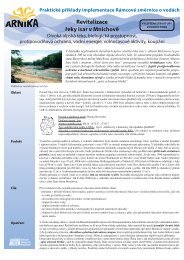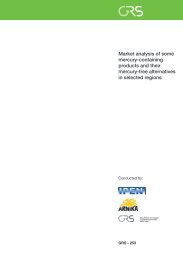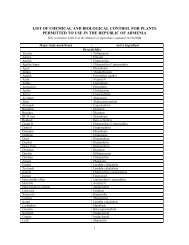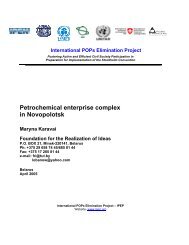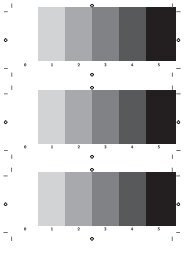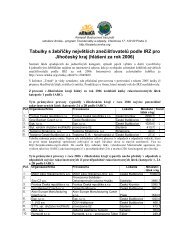Mercury in Fish 1.45 Mb - Arnika
Mercury in Fish 1.45 Mb - Arnika
Mercury in Fish 1.45 Mb - Arnika
Create successful ePaper yourself
Turn your PDF publications into a flip-book with our unique Google optimized e-Paper software.
Page 3 <strong>Mercury</strong> Policy Project<br />
<strong>Mercury</strong> <strong>in</strong> <strong>Fish</strong><br />
Methylmercury poisons the nervous system.<br />
Health effects of primary concern <strong>in</strong>clude<br />
damage to babies’ develop<strong>in</strong>g bra<strong>in</strong>s<br />
when pregnant women are exposed to<br />
methylmercury, with effects on <strong>in</strong>telligence,<br />
learn<strong>in</strong>g ability and behavior. 2 Adults and<br />
children exposed to excessive doses of<br />
methylmercury can also suffer from effects<br />
on memory, cognitive and sensory functions,<br />
and motor coord<strong>in</strong>ation, 3 and some research<br />
suggests that the risk of cardiovascular disease<br />
<strong>in</strong>creases with methylmercury exposure. 4 In<br />
extreme cases, methylmercury poison<strong>in</strong>g can<br />
lead to paralysis, coma and death.<br />
Human exposure to methylmercury comes<br />
<strong>in</strong> a few cultures, from eat<strong>in</strong>g mar<strong>in</strong>e<br />
mammals such as whales and seals<br />
risk of excessive exposure to<br />
methylmercury is therefore<br />
generally highest among<br />
populations with the<br />
greatest consumption<br />
of these foods. Animals<br />
from different levels of<br />
the food web conta<strong>in</strong><br />
different levels of<br />
and mammals atop the<br />
food cha<strong>in</strong> generally conta<strong>in</strong><br />
consumed by a population, or <strong>in</strong>dividuals<br />
<strong>in</strong> a population, are also therefore factors <strong>in</strong><br />
the risk of methylmercury exposure.<br />
Methylmercury exposure has been the subject<br />
of extensive risk management efforts by<br />
national governments and <strong>in</strong>tergovernmental<br />
bodies such as the World Health Organization<br />
(WHO). The WHO has established upper<br />
limits for tolerable weekly exposure to<br />
methylmercury (discussed <strong>in</strong> a later section),<br />
and provides advice to member governments<br />
on risk-mitigation measures. The Codex<br />
Alimentarius Commission (Codex), a United<br />
Nations food safety body, has adopted<br />
guidel<strong>in</strong>es on acceptable mercury levels<br />
world, and offers risk-management and riskcommunication<br />
advice to governments.<br />
Many national governments also have set<br />
limits on acceptable mercury concentrations<br />
Appendix A). For its report, the<br />
Codex work<strong>in</strong>g group on methylmercury<br />
different types that had been collected by<br />
the governments of the EU, the US, Canada<br />
Japan, and several other countries. 5 Some<br />
are available on the <strong>in</strong>ternet. 6<br />
The Codex mercury limits,<br />
which are typical of<br />
those adopted by<br />
many countries,<br />
specify 1.0 mg/kg<br />
(one milligram<br />
per kilogram) as<br />
the maximum<br />
acceptable<br />
methylmercury<br />
level <strong>in</strong> large,<br />
Appendix E), and<br />
0.5 mg/kg as the limit<br />
limits are not enforceable<br />
regulations, but rather are guidel<strong>in</strong>es;<br />
levels near or above these guidel<strong>in</strong>es, health<br />
The risk posed by methylmercury exposure<br />
depends on the dose of methylmercury that<br />
a person consumes (usually expressed <strong>in</strong> µg/<br />
kg/week, or micrograms of methylmercury<br />
per kilogram of body weight per week). The<br />
dose one gets depends on both the mercury



